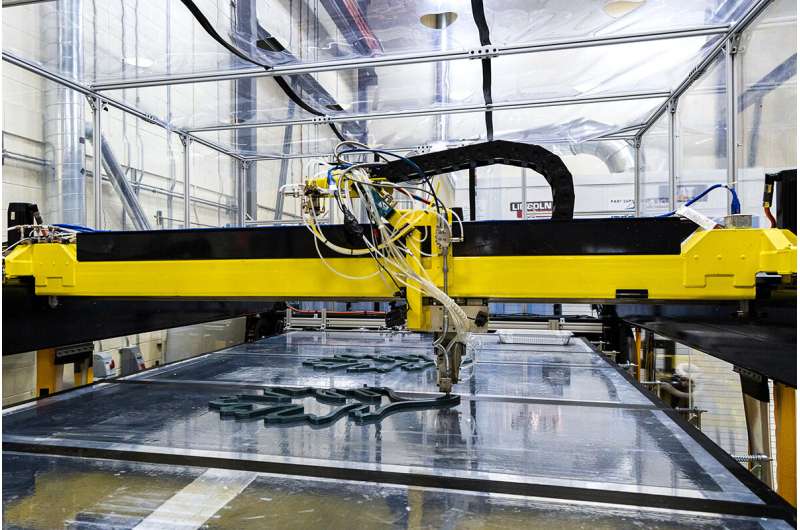This article has been reviewed according to Science X's editorial process and policies. Editors have highlighted the following attributes while ensuring the content's credibility:
fact-checked
peer-reviewed publication
trusted source
proofread
New correlation ratio allows researchers to better understand soft material behavior

The mechanics behind the collapse of soft materials structure have befuddled researchers for decades. In a new study, researchers uncover a metric that finally correlates microscopic-level processes with what is seen at the macroscopic level.
The new metric is poised to help bring advances to various materials engineering challenges—ranging from the formulation of better 3D printing inks, the construction of wearable flexible electronics and sensors, the accurate printing of biomedical implants, to helping control landslides and avalanches, and even improving the textures of processed foods and personal care products, the researchers said.
A team of chemical engineers from the University of Illinois Urbana-Champaign has made many advances in understanding how soft materials fail—or yield—to force. However, connecting the team's larger-scale observations to what is happening at the microscale level has remained elusive.
In the study, researchers at U. of I., collaborating with teams at Argonne National Laboratory, Johns Hopkins University and the University of Ottawa, explain this relationship with a new metric they call a "correlation ratio."
The findings are published in the Proceedings of the National Academy of Sciences.
The team used a high-powered microscopy technique—called rheo- X-ray photon correlation spectroscopy—to study flow-dependent structure-property relationships and soft materials in real time.
Rheo-XPCS is one of the few techniques that allow researchers to perform X-ray analysis of a material as it is being deformed, while simultaneously measuring it using rheometers—devices that measure stress and strain—directly in line with an X-ray beam, the researchers said.
"From a materials science perspective, we have not been able to distinguish when a material changes from behaving like a solid to a liquid at the microstructural scale," said Illinois chemical and biomolecular engineering professor Simon Rogers, who led the project. "The Rheo-XPCS at Argonne National Lab gives us an unprecedented peek at the microscale behavior of soft materials yielding to stress."
In the lab, the team worked with a material called soft colloidal glass, which is a disordered system of nanoparticles made of silica.
"We call it a soft material because the interparticle interactions cause it to be sort of squishy—like having a bunch of water balloons pushed together to form a material," said Gavin Donley, the first author of the study and former Illinois graduate student now at Georgetown University. "We used this specific material because it provides a strong X-ray signal that we can record while we perform simultaneous macroscopic measurements."
This technique allowed the researchers to finally witness the direct connection between microscopic displacements and macroscopic behavior, allowing them to define the behavior using mathematical terms.
"Getting down to the nuts and bolts of this problem is a step forward so that future researchers that want to design new soft materials can do so by tweaking various microscale parameters to get a desired macroscale property," Donely said. "We're not quite there yet, but we have shown a clearly-defined mathematical correlation between the micro- and macroscale."
More information: Gavin J. Donley et al, Investigation of the yielding transition in concentrated colloidal systems via rheo-XPCS, Proceedings of the National Academy of Sciences (2023). DOI: 10.1073/pnas.2215517120




















